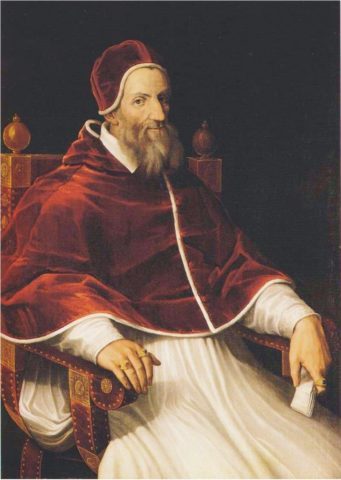Year after year, every time April 23rd approaches, scholars persist in telling us that Miguel de Cervantes and William Shakespeare died on that very same day, in 1616. In fact, it did not happen that way, since Shakespeare died days after the appointed date. Next, we are going to tell the reason of such a coincidence in the calendar.
We will start at the beginning because, without having proposed it, the astronomer Aloysius Lilio was very guilty of such a coincidence. Lilio was an Italian scholar who studied medicine and astronomy in Naples during the 1st third of the 16th century, one of the periods of aristocratic splendor of the viceroyalty.
Finished his studies, Lilio put himself at the service of the Casa de Carafa, a
It was 1577 and Pope Gregory I, after reading the work of Aloysius, decided to send it to university experts in the Christian field to gather opinions about it. In Spain, the consultation would reach the universities of Salamanca and Alcalá de Henares, as well as the Spanish-Milanese engineer and inventor Juanelo Turriano. That Turriano deserves an aside for being known as a Court Watchmaker.

For Carlos I, the engineer Juanelo Turriano not only built astronomical clocks able to indicate the position of the stars at every moment, but also built automata, mechanical devices and, as if that were not enough, ponds for the Yuste monastery where the water was renewed every time thanks to its pumping mechanism. But one of the ponds that Turriano devised did not work as it had to work and unleashed the deadly germs that would end the life of the
However, this was not known until hundreds of years later when, at the beginning of this century, the finger of the mummy of Carlos I was analyzed by Dr. Julián de Zulueta. But going back to the times of Juanelo, after the death of Carlos I, the architect Juan de Herrera commissioned him to design the bells of the monastery of El Escorial and in between, Pope Gregory XIII would consult him about the Compendium.
It seems that both Juanelo, as well as each of the experts who consulted Gregory XIII, coincided in the lag of the current calendar at the time, the Julian calendar (so named because it was introduced by Roman emperor Julius Caesar in 46 BC). , since, since the aforementioned calendar had been established, the translation of the Earth around the Sun came mismatching days. According to the Julian calendar, the translation of the Earth lasted a little more than 365 days; to be exact, 365 days, 5 hours, 48 minutes, and 45.16 seconds.
But, before the introduction of the Julian calendar, the duration of each year was 11 minutes and 4 seconds less. This time, once added over the years, was an error of just over 10 days that served Lilio as the basis for his Compendium. In such a way that his proposal to add 10 days to the civil calendar was accepted as a measure and approved in the Bull Inter Gravissimas, on February 24th, 1582.
In Spain the Pope’s desire is attended and, with the reform of the “Julian” calendar, the course of our History will lose 10 days of the year 1582. On the other hand, England would take almost 2 centuries to adapt the new calendar, doing it in 1752. Therefore, when Shakespeare dies, he does it on April 23rd, 1616 according to the Julian calendar, but on May 3rd if we add the adjustment of the 10 days of the Gregorian calendar that dated the death of Cervantes.
As the philologist Carlos Mayoral points out, the coincidence of the deaths of Cervantes and Shakespeare on the very same day is another example of a cultural posturing.

